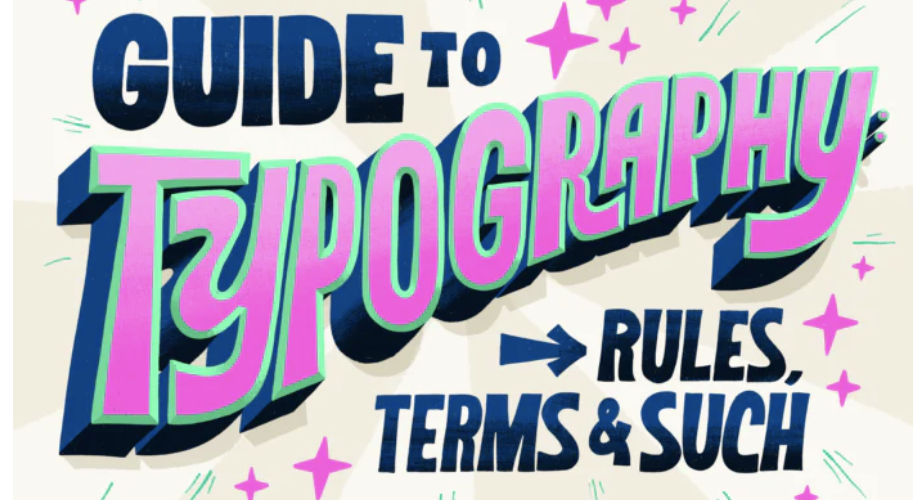Typography design is a mesmerizing blend of art and science that often goes unnoticed in our daily lives. Yet, it plays an integral role in shaping our perception of written communication. From books to websites, advertisements to packaging, typography is the visual language that communicates emotions, tones, and intentions.
In this in-depth exploration of typography design, we’ll unravel the secrets behind this ancient craft, from its historical roots to its modern applications, and dive deep into the principles, psychology, and evolving trends that make it a fascinating and indispensable aspect of visual communication.
Contents
I. A Brief History of Typography
Typography’s origins date back to ancient civilizations. From cuneiform inscriptions on clay tablets in Mesopotamia to the exquisite calligraphy of Chinese scrolls, the history of typography is a tale of human ingenuity and creativity. It took a significant leap forward with Johannes Gutenberg’s invention of the printing press in the 15th century, which made books accessible to the masses and heralded the age of typography as we know it.
II. Anatomy of Typography
Typography is not just about selecting fonts; it involves understanding the intricate elements that make up a typeface:
- Typefaces vs. Fonts: The terms “typeface” and “font” are often used interchangeably, but they have distinct meanings. A typeface is the design of a set of characters (e.g., Times New Roman), while a font refers to a specific style or variation within that typeface (e.g., Times New Roman Bold).
- Typography Families: Typefaces can be grouped into various families, such as serif, sans-serif, script, and display. Each family has unique characteristics that convey different moods and purposes.
- Hierarchy: Typography creates a visual hierarchy that guides readers through content. Headings, subheadings, and body text are all part of this hierarchy, and their visual contrast aids comprehension.
III. Principles of Typography Design
- Legibility and Readability: Typography must prioritize legibility (the ability to distinguish individual characters) and readability (the ease of reading text as a whole). Factors like font choice, size, spacing, and contrast significantly impact these aspects.
- Alignment and Grids: Proper alignment and grid systems create order and coherence in design, ensuring that text flows smoothly and is aesthetically pleasing.
- White Space: The use of white space, or negative space, is crucial for typography. It allows text to breathe and enhances the overall design’s balance.
- Kerning and Leading: Kerning refers to the adjustment of space between individual characters, while leading is the vertical spacing between lines of text. Precise control of these factors improves legibility and aesthetics.
IV. Typography in the Digital Age
With the advent of digital design, typography has undergone a revolution. Web fonts, responsive design, and variable fonts have given designers unprecedented control over how type is displayed on various devices. The role of typography in user experience (UX) design has never been more critical, with readability and accessibility taking center stage.
V. The Psychology of Typography
Typography has a profound impact on how we interpret and react to written content. Consider the following:
- Emotional resonance: Different fonts evoke different emotions. For example, a bold, sans-serif font may convey strength and confidence, while a delicate script font might evoke elegance and grace.
- Cultural associations: Typography can carry cultural and historical baggage. For example, serif fonts may be associated with tradition and formality, while sans-serif fonts are often seen as modern and minimalistic.
- Typography in branding: Brands use typography to convey their identity and values. Iconic logos like Coca-Cola’s script font or Apple’s clean, modern typeface have become instantly recognizable.
VI. Evolving Trends in Typography
Typography design is a dynamic field, influenced by cultural shifts and technological advancements. Some current trends include:
- Variable Fonts: These fonts allow for real-time adjustment of weight, width, and other attributes, offering designers greater flexibility in responsive design.
- Experimental Typography: Designers are pushing boundaries by blending typography with illustration and other artistic elements, creating visually stunning and unique compositions.
- Minimalism: The “less is more” approach continues to be popular, with clean, simple typography taking center stage in many designs.
Conclusion
Typography design is more than just selecting a font; it’s a powerful tool for conveying information, emotion, and identity. Its rich history, intricate principles, and psychological impact make it a captivating field for designers and a vital aspect of our everyday lives. As we move further into the digital age, the importance of typography in shaping how we communicate and interact with information will only continue to grow. So, the next time you read a book, browse a website, or see a logo, take a moment to appreciate the artistry and science of typography that makes it all possible.
